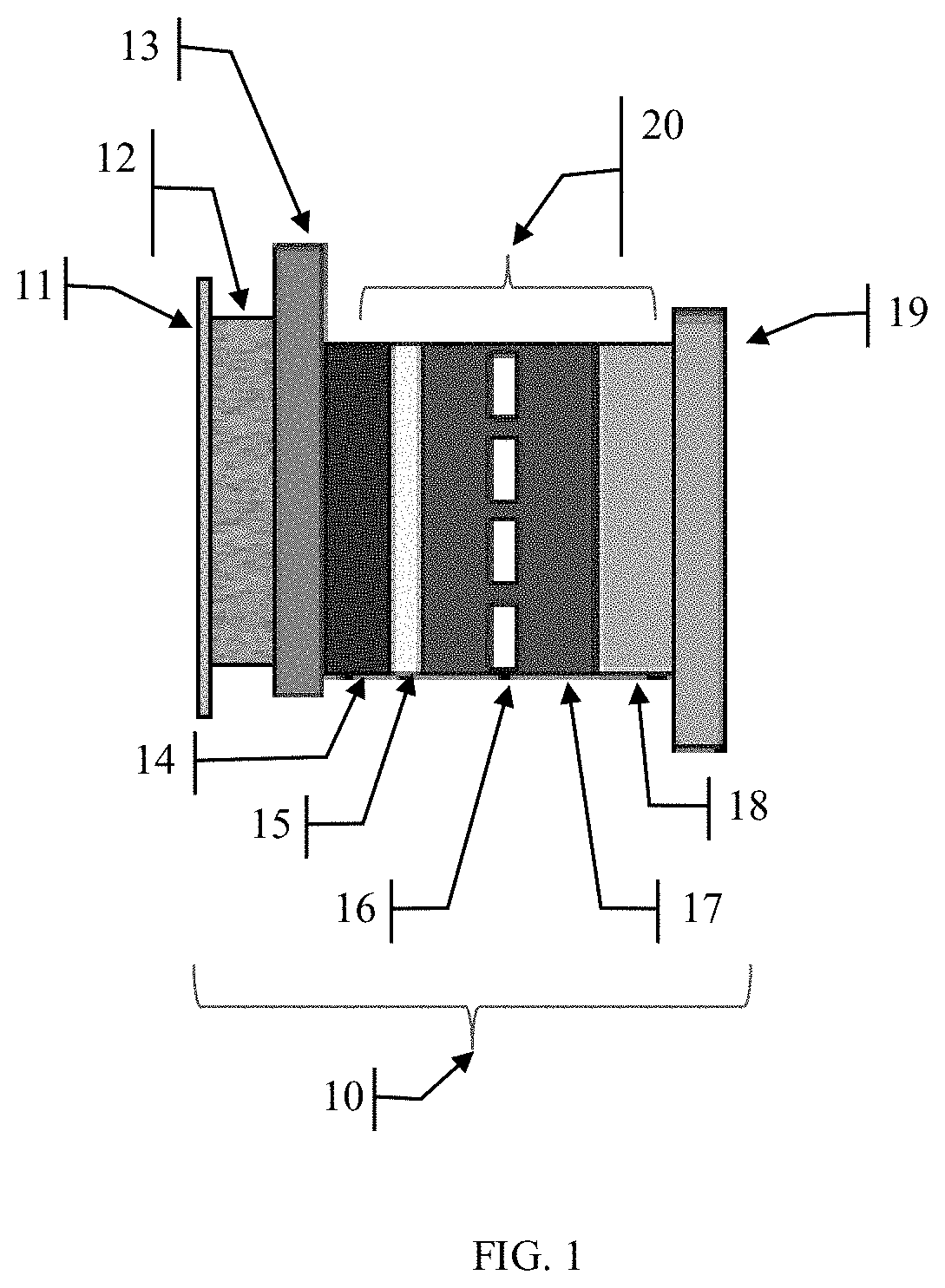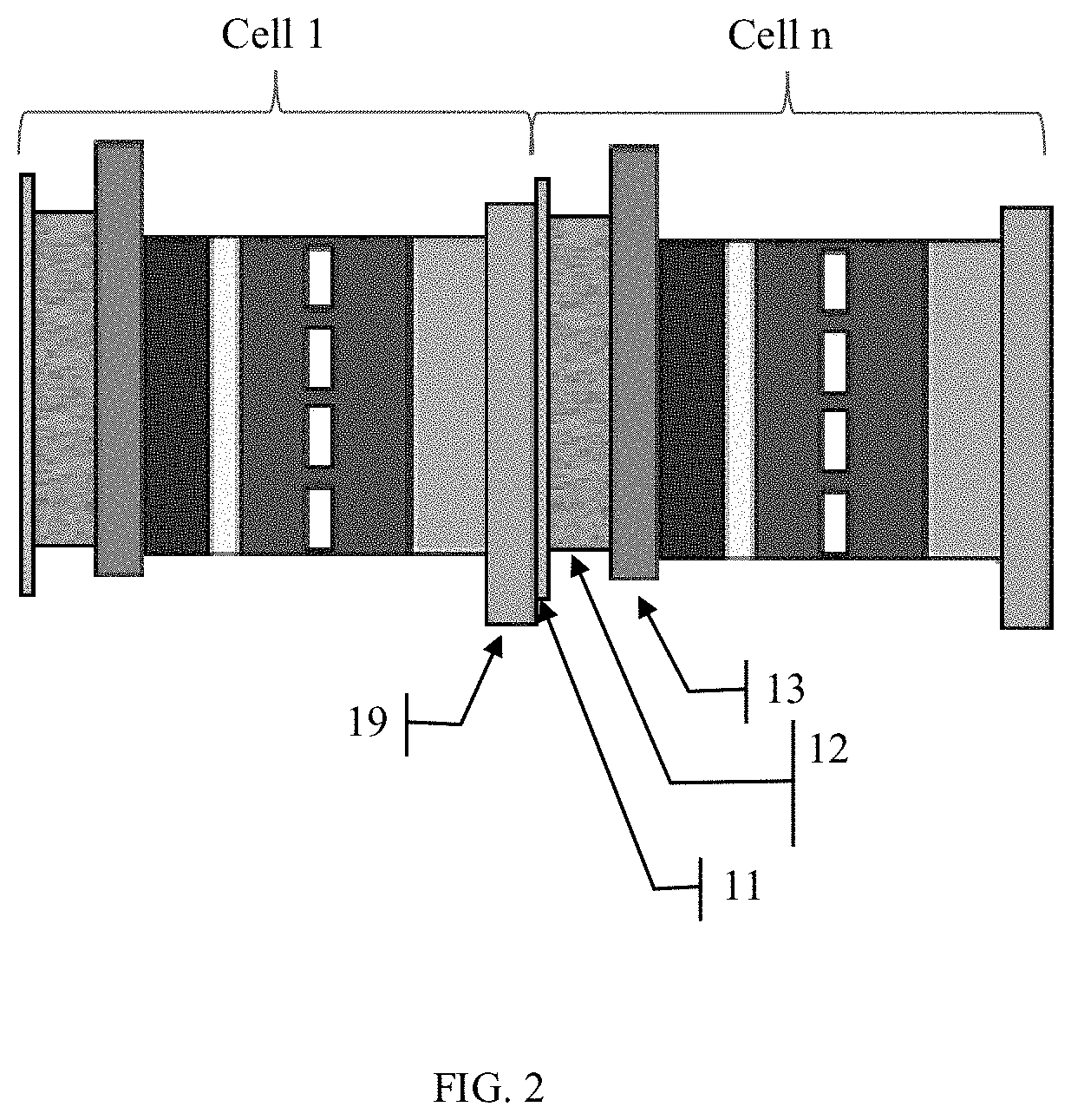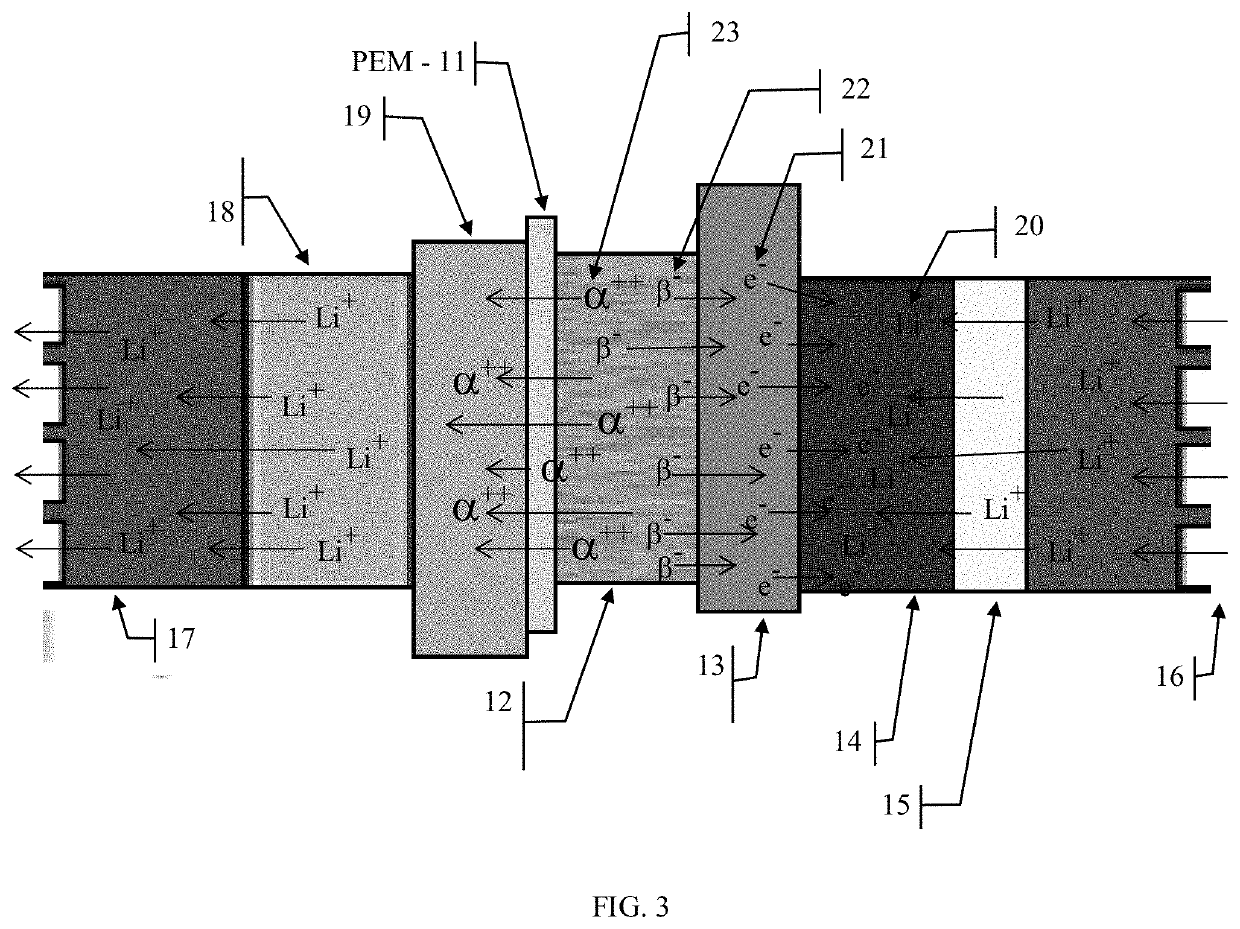Self-recharging direct conversion electrical energy storage device and method
a technology of electrical energy storage and self-recharging, which is applied in the direction of electrochemical generators, secondary cells servicing/maintenance, nuclear engineering, etc., can solve the problems of less desirable isotopes that produce gamma rays and high-energy neutrons, and achieve greater energy density and efficiencies, eliminating the health problems of ionizing gamma and or neutron radiation
- Summary
- Abstract
- Description
- Claims
- Application Information
AI Technical Summary
Problems solved by technology
Method used
Image
Examples
Embodiment Construction
[0029]For the following discussion, refer to FIG. 1. The device 10, comprises a rechargeable electrochemical cell 20, such as a Lithium Ion cell, which may be comprised of a cathode plate 19 such as aluminum, a Li ion capture material 18 such as LiCoO2 (or LiMnO2, or others), an electrolyte material 17 such as a lithium salt dissolved in organic solvent with a semipermeable membrane 16 separating the anode and cathode sides of the cell, a carbon anode 14 with an plate 13 such as copper, a layer of radio isotope material or a mixture of radio isotope materials 12 which emit alpha and or beta particles, with or without a bonding agent (not shown) and a proton exchange membrane layer with an electrolyte material 11 that is comprised of a highly negatively charged material, and if necessary, a dielectric insulating layer (not shown). These layers can be rolled up to produce a typical cylindrical battery device, referred to in the industry as a “jelly roll,” and shown in FIG. 6, or stack...
PUM
| Property | Measurement | Unit |
|---|---|---|
| thickness | aaaaa | aaaaa |
| semiconducting | aaaaa | aaaaa |
| structure | aaaaa | aaaaa |
Abstract
Description
Claims
Application Information
 Login to View More
Login to View More - R&D
- Intellectual Property
- Life Sciences
- Materials
- Tech Scout
- Unparalleled Data Quality
- Higher Quality Content
- 60% Fewer Hallucinations
Browse by: Latest US Patents, China's latest patents, Technical Efficacy Thesaurus, Application Domain, Technology Topic, Popular Technical Reports.
© 2025 PatSnap. All rights reserved.Legal|Privacy policy|Modern Slavery Act Transparency Statement|Sitemap|About US| Contact US: help@patsnap.com



